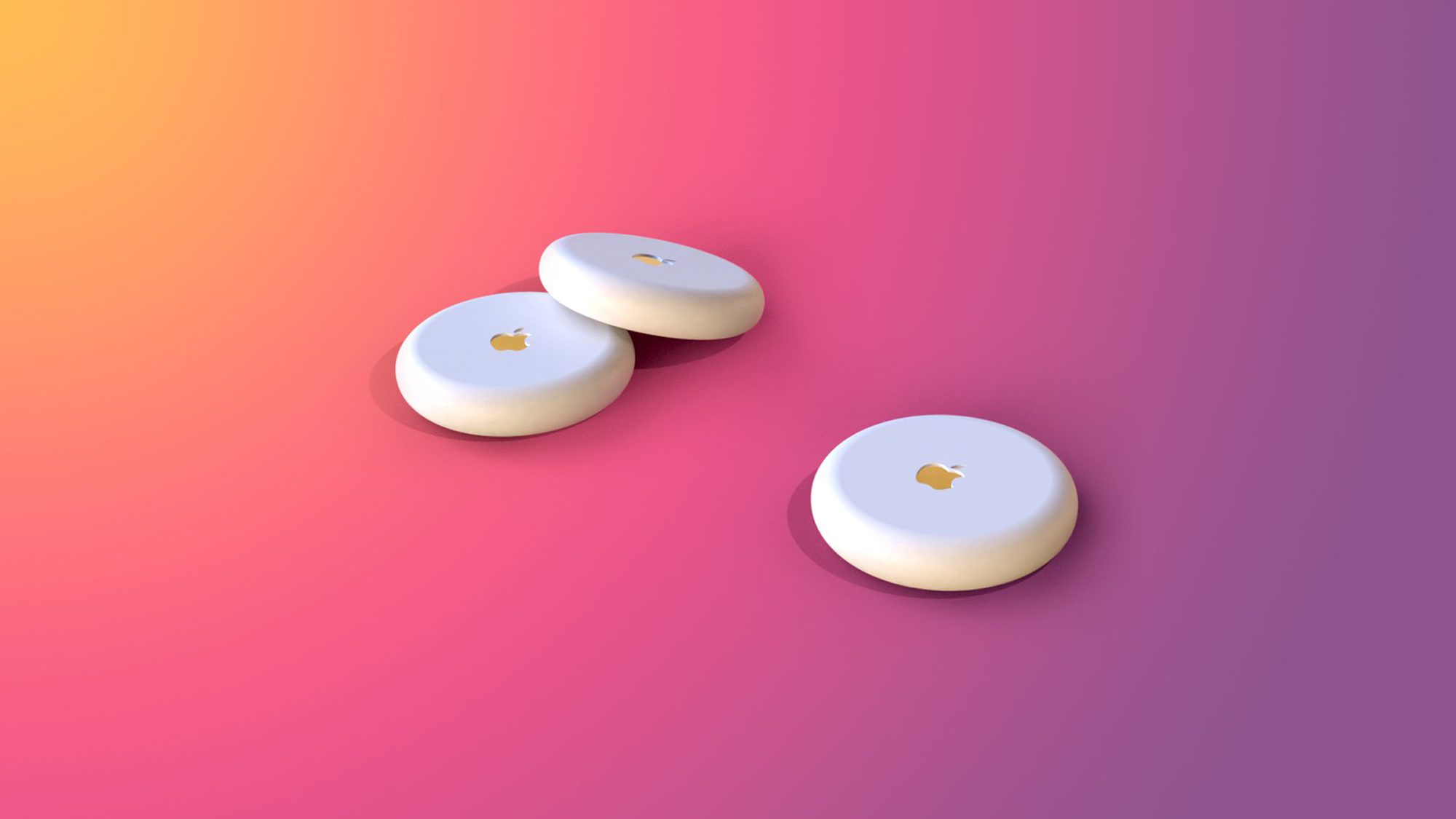How to tell if an AirTag is stalking you — and what you can do about it
Here's how iPhone users, Android users and even people without smartphones can detect rogue AirTags

Despite Apple's best efforts to the contrary, the company's AirTag trackers have become a convenient, cheap and effective way to stalk people ever since the tiny tracking devices were released in April 2021.
AirTags use Apple's Find My network so that nearby iPhones and iPads can pick up their signals and relay them to Apple, along with the location. The AirTag owner is then notified where the AirTag is.
Since there are nearly a billion iPhones being used worldwide, an AirTag can be precisely located by its owner anywhere there are people with iPhones nearby —even underground or in buildings.
Near-constant local-news reports of apparent AirTag stalking, stories that show how easy it is to stalk someone using AirTags, and, most recently, two state attorneys general issuing consumer warnings about AirTag stalking have led Apple to recently promise to update its apps to make detecting and finding rogue AirTags more effective.
The first updates, such as a new legal warning pop-up and more specific, un-disableable warning messages, are now live in the new iOS 15.4 beta. However, most of those changes won't be ready for months. And while Google seems to be working on a built-in tracker detector for Android, that doesn't seem anywhere near done either. The problem is such that we think it's time to take Apple AirTags off the market.
In the meantime, here's what you can do to make sure someone else's AirTag isn't stalking you.
Make sure you can detect AirTags on an iPhone
If you have an iPhone 6s or later, update your device to the latest possible version of iOS.
Sign up to get the BEST of Tom's Guide direct to your inbox.
Get instant access to breaking news, the hottest reviews, great deals and helpful tips.
Devices with at least iOS 14.5 installed will receive notifications about nearby AirTags and other devices that use the location services of Apple's Find My network. You'll get notifications only if those devices have been separated from their paired iPhones or iPads and have been following your own iPhone or iPad's movements for a few hours.
Make sure you've enabled notifications about unknown Find My devices. Go into the Find My app on your iPhone or iPad, tap the Me icon in the bottom right, and scroll down to make sure that "Item Safety Alerts" is toggled on.
Make sure you can detect AirTags on an Android phone
If you have an Android phone, download the AirGuard app from the Google Play store, install it and turn on Bluetooth. AirGuard is compatible with Android 5.0 Lollipop and later, so most Android phones and tablets released after 2012 should support it.
AirGuard will periodically scan around you and give you the same kind of notifications about rogue Find My devices that iOS 14.5 provides for iPhone users. (Apple's own Tracker Detect Android app is less useful because it doesn't scan automatically and requires at least Android 9.0 Pie.)
Once AirGuard is installed and updated, iPhone and Android users will be on roughly equal footing, at least for the moment. But the anti-stalking changes that Apple has promised for later in 2022 will mostly help iPhone users.
Google may be working on its own anti-stalking functionality for Android, based on code found in a new version of Google Play Services. This isn't an official feature though, and may not go live for some time.

How to detect AirTags if you have no smartphone, or a very old one
If you don't have a smartphone, or you're using one that can't update to iOS 14.5 or Android 5, then the only kind of notification you'll receive that someone else's AirTag is in your immediate vicinity is a persistent chirp.
An AirTag will begin chirping 24 hours after it's been separated from its paired iPhone or iPad. It doesn't have to be "moving with you" — it could just be lost.
Compared to the notifications that modern iPhone users get after a few hours, this 24-hour waiting period does put at a disadvantage people without smartphones, Android users without AirGuard, and users of iPhone 6 or earlier when it comes to being notified about about possible stalking attempts using AirTags.
iPhone notifications that mean an AirTag may be tracking you
Apple's notification system about rogue AirTags can be a bit confusing. It's meant to detect all Find My devices, including AirTags, AirPods, and third-party devices like dog collars and electric bikes, that have been separated for at least a few hours from their paired iPhones and are mirroring your iPhone's movements.
The notifications may display the words "Unknown Device Detected," "Unknown Accessory Detected," "Unknown AirTag Detected," "Item Detected Near You," "AirTag Found Moving With You" or something similar. They will also display a map of your general area to show how the device has been moving along with you.
But you'll need to figure out if the detected device is really a threat. For example, "Unknown Device Detected," a message that's turned up in several reports of AirTag stalking, could just indicate a lost pair of AirPods on your bus or train.
Theoretically, a pair of AirPods could also be used to track you, but that's unlikely as they cost at least six times as much as a $29 AirTag. If the rightful owner of the AirTag, AirPods or other tracking device has marked them as lost, then you may see a message in the iPhone notification about how to contact the owner.
Apple plans to soon specify, as best it can, exactly what your iPhone is detecting. Your phone should already tell you if it's pretty certain the device is an AirTag, and a few months from now, some messages may say "AirPods Pro detected."
If the iPhone can't tell exactly what it's detecting, the notification will still be "Unknown Device Detected" or "Unknown Accessory Detected" even if it's actually an AirTag.
Android notifications that mean an AirTag may be stalking you
On Android, the AirGuard app will pop up a notification on your screen that "A tracker was discovered!" Tap the notification and you'll get a display of the detected devices's MAC address (i.e, the unique ID of its Bluetooth chip).
You'll also see the date and time of when the device was first and was most recently detected, plus a map and timeline showing how it's been mirroring your movements.
Apple's Tracker Detect app for Android is more bare-bones. You have to start the scan manually, and while you're not going to be doing that all day, it might be wise to do so when you leave a crowded public place such as a bar, restaurant, shopping mall or concert venue.
If Tracker Detect finds a possible rogue AirTag, it will display the words "Unknown AirTag" and tell you how long ago it was spotted. But you won't get a map or a timeline.
Sounds that may mean an AirTag is stalking you

As stated above, an AirTag will start chirping if it's been separated from its paired iPhone or iPad for more than 24 hours, whether it's just lost or it's actively tracking you. This is the only way that someone without a smartphone, or whose smartphone died, can detect an AirTag.
However, that chirp isn't terribly loud. It might be hard to hear if the AirTag is in a coat pocket, a bulky purse, inside packed luggage or on the outside of car. And there's already a gray market that resells AirTags whose speakers have been disconnected.
Apple seems to have made the volume of the lost-AirTag sound louder as of an update rolling out through the end of April/beginning of May, which will make this more reliable.
What to do if you detect a rogue AirTag
If you get a notification on your phone of an unknown device or tracker, or you hear an AirTag chirping, what you do next depends on whether you're home.
If you're traveling, don't go straight home just yet. You need to find the device and possibly disable it first. If you're already home, you need to find it as quickly as possible. There are several ways.
The most obvious one is to follow the sound of the chirps. You may have to empty coat pockets or purses, remove cushions from sofas, or examine the outside of a car. (Check inside the gas-cap door or behind a license plate.)
If you've got an iPhone running iOS 14.5 or later, you can force the device to start chirping right from the notification alerts on your phone. The same goes for Android phones with AirGuard or Tracker Detect installed, although the former lets you force chirps immediately, while Apple's app makes you wait 10 minutes.
If your iPhone runs iOS 15.2 or later, then you can wirelessly disable the AirTag right from the notification screen without physically finding it.
For everyone else, you've got to find the actual device, and for now that means following the chirps.
Later this year, Apple will roll out an update to the Precision Finding for iPhone 11 and later devices. This will use those phones' UltraWideBand chips to display on the screen how far you are from the AirTag and in which direction it is — a feature that at the moment works only with AirTags legitimately paired with your iPhone.
What to do if you find a rogue AirTag
Once you find the AirTag, don't destroy it. First, you want to get the serial number, which may be displayed in the rogue-AirTag notifications you get on an iPhone; the serial number can also be found by tapping an NFC-enabled Android phone against the AirTag.
After that's done, you can disable the AirTag by pushing down on the center of the back panel and twisting the panel counterclockwise. The panel will pop off, and inside is a standard CR2302 watch battery that you can just pop out.
Think twice about doing this, though, because it's possible that the AirTag (or other device) was lost in good faith, and disabling it means that its rightful owner won't be able to use Find My to locate their missing item.
The serial number is also printed inside the back panel. Apple recommends that you go to the police and report the incident along with the AirTag's serial number, which will let Apple track down the rightful (and possibly wrongheaded) owner.
It's also important to remember that it's not just AirTags; your smartphone location data is being shared and sold, so knowing how to turn off location tracking is more important than ever.
Correction: An earlier version of this story overstated the possible ways of disabling someone else's AirTag. The only current way to do so is to remove the battery. Tom's Guide regrets the error.
Paul Wagenseil is a senior editor at Tom's Guide focused on security and privacy. He has also been a dishwasher, fry cook, long-haul driver, code monkey and video editor. He's been rooting around in the information-security space for more than 15 years at FoxNews.com, SecurityNewsDaily, TechNewsDaily and Tom's Guide, has presented talks at the ShmooCon, DerbyCon and BSides Las Vegas hacker conferences, shown up in random TV news spots and even moderated a panel discussion at the CEDIA home-technology conference. You can follow his rants on Twitter at @snd_wagenseil.

